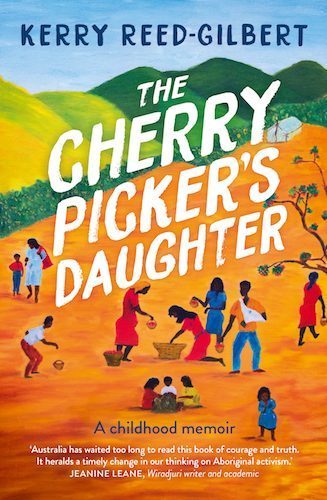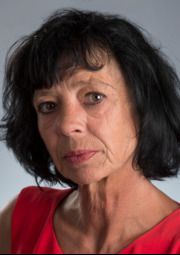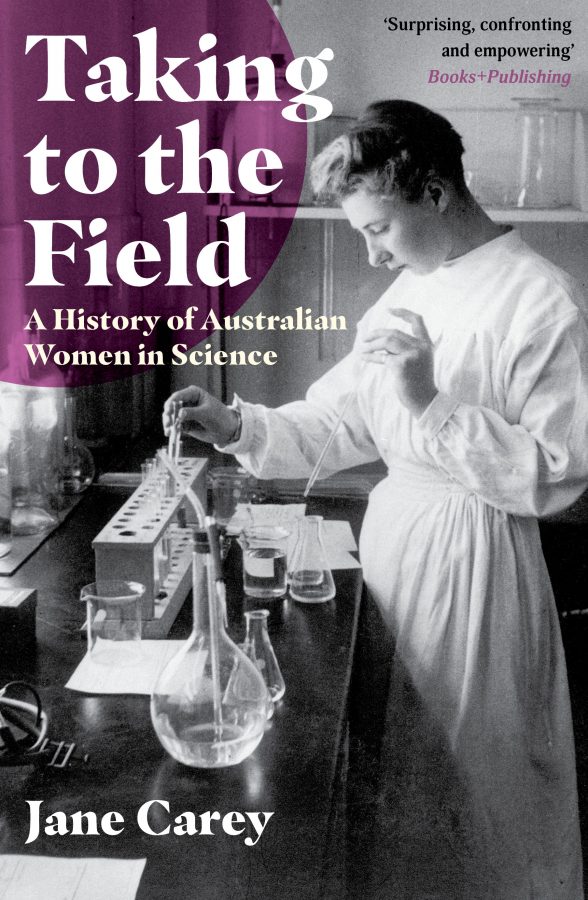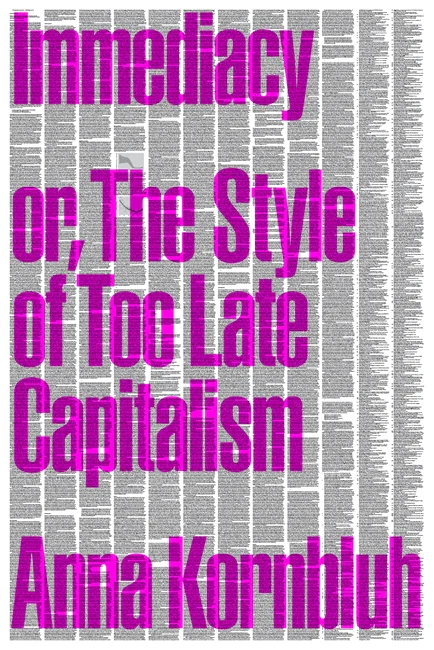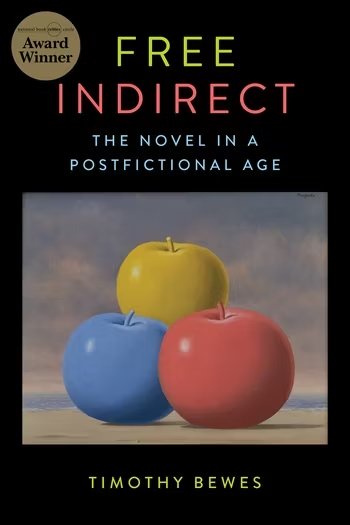On 13 July 2019, in the middle of Canberra’s notoriously hard winter, Australia lost a literary treasure and lifelong activist whose work and writing was, in her own lifetime at least, largely unsung. Aunty Kerry Reed-Gilbert (1956 – 2019) was an Elder of the Wiradjuri nation whose journey in this life began on the banks of the Kalari river in Condobolin, central-western New South Wales, as the youngest of eight children in what she described as a ‘blended family, sixty years before the term became fashionable’. All eight children were raised by Mummy, Aunty Joyce Hutchings, who was the elder sister of Kerry’s father, the poet and activist Kevin Gilbert. Aunty Kerry’s memoir The Cherry Picker’s Daughter is above all a tribute to the home-front activism of Aboriginal women, which all too often goes unnoticed.
A teacher and advocate, Aunty Kerry was also the co-founder and inaugural chairperson of the First Nations Australian Writers Network (FNAWN) and UsMob Writing, an ACT-based group of First Nations Australian peoples. She was a trailblazing writer who strengthened the voice of Aboriginal and Torres Strait Islander people through her writing, mentoring, activism and, above all, her kindness and inexhaustible generosity.
She was the author and editor of numerous works of poetry and prose, including Black Woman Black Life (Wakefield Press, 1996); Talkin’ About Country (Kuracca, 1997); Message Stick: Contemporary Aboriginal writing (IAD Press, 1997); Ngunnunggula (Belonging to Here): Stories and poems (FreeXpression, 1997); and The Strength of Us as Women: Black women speak (Ginninderra Press, 2000), as well as edited collections, A Pocket Full Of Leadership (ACT KLAs 2016) and Too Deadly: Or Voice Our Way Our Business (2017).
The Cherry Picker’s Daughter is the foundation title in a new imprint founded by Wild Dingo Press, Deadly Dingo Books, which has been set up to publish exclusively the work of First Nations’ writers. A note from the publisher acknowledges the importance of bringing ‘this timely story into the light of day’.
For those familiar with Aboriginal literature, or more broadly the Black history of white Australia, the title will resonate. In 1968 Kevin Gilbert penned what has been described as the first Aboriginal play, The Cherry Pickers, while serving a life-sentence for the murder of his first wife, Aunty Kerry’s mother Goma Scott Gilbert in 1957. In the Postscript to The Cherry Picker’s Daughter, Aunt writes:
People often mistake The Cherry Picker’s Daughter as being written for my father, but it’s not. It’s written for Mummy, Jacqueline Joyce Hutchings (nee Gilbert), the most amazing Aboriginal woman, who was my mother.
The Cherry Picker’s Daughter was written so that readers would gain an understanding of what life was like in the 1950s and 60s for Aboriginal people; and in particular what it was like for Mummy raising eight children at the height of the assimilation policy. It’s an Australia that is a long way from the ‘prosperous, peaceful nation’ romanticised by some conservatives. It’s a memoir that takes us behind the scenes to a bedrock of Black activism. And to an Australia that may seem like a foreign country to white settlers, a country that is neither young nor free.
The Cherry Picker’s Daughter begins with a family reunion at a town called Condo – short for Condobolin in Wiradjuri Country, central New South Wales – an important fruit growing region. The opening scene is warm. Meat sizzles, kids are running around and laughter swirls in the air. A big mob of relatives gathers at the spot by the Kalari river where Aunty Kerry spent her childhood. Tents are pitched and kids are put to bed. Through the laughter Kerry feels a piercing, searing pain. We learn that the gathering is a wake celebrating Mummy’s life.
Tears gush and this time it’s not from laughter. I say a little prayer to Mummy, telling her how much I love her and that we’ll be together again soon.
Years fall away. We are walking down the main street of Condo – ‘a hot dusty town’. It’s 1960 and a four-year-old Kerry, ‘all dressed up in her town clothes’ walks tall and proud with Mummy knowing that ‘she loves me and that’s the most important thing in the world.’ Even before her four-year-old self articulates it, the child here knows, somehow, that what the rest of white Australia takes for granted – the right to family, the right to belong – is not, at this time in Australia the right of the Country’s First Peoples.
We walk with the young Kerry and Mummy down to the bottom end of the main street, over a dirt road to what is ‘the best place in the world’ – a ‘little piece of paradise’ for Kerry and her family – the Island, by the banks of the river where they live. A dry river bed divides their home from the streets of Condo. The ‘dry riverbed’, affectionately referred to by Kerry and her mob as ‘the gutters’, is a cultural divide, drawn up on racial lines that separates the white privilege of post-invasion settlers from the Wiradjuri people.
The opening of this memoir is grounded in an acute sense of place and belonging. Kerry tells the reader: ‘Our families have been here for a long, long time, right from the very start’. This unbroken connection to place and people permeates the narrative as Kerry recalls a life of tremendous difficulty and stress, always with a sense of unflappability, courage, determination and humour. ‘You gotta laugh!’ is a mantra that appears throughout the work.
Mummy gets work wherever she can, stick-picking, felling trees (she can swing an axe better than any man), cooking at the pub or cleaning. As the memoir opens, Mummy is cleaning. Inequality across the cultural divide is seen poignantly through the eyes of the four-year-old Kerry:
The lady’s house she cleans is real big and lovely – made of red bricks and has real old stuff inside. It’s got all these things in it that I’ve never seen before… I’m happy but after cleaning the big house, Mummy’s exhausted. We head back to the Island where we belong.
The wider public view of Britain’s peaceful settlement of Australia is shattered under the power of Aunt’s uncompromising determination to tell her story and that of Mummy. The myth of one Australia is laid bare and another Australia – the one that Aboriginal people live in – comes to the fore.
Life on the other side of the fair-go nation is not fair at all. Long before she begins school, the infant Kerry learns that ‘we’re Aboriginal’ and not like other families. Her older sister Lynnie tells her; ‘that’s why welfare comes’. Lynnie also says that, ‘welfare’ is a white man in a suit who can ‘take us away from Mummy’.
From the very beginning The Cherry Picker’s Daughter signals that it will differ from conventional settler-authored autobiographies. Such works do not generally begin with an acknowledgement and foregrounding of the ways in which other people have seen the narrator of the text. Most start out and continue with the ‘I’ in full voice on centre stage. This is no such story, as the connectedness of the Aboriginal family, beyond the nuclear, and the ultimate importance of belonging and knowing where one fits into the great circle of community and Country threads through the narrative. We learn that, ‘This Mummy and Daddy, my brothers and sisters, we all seem to fit together. I’m the baby of them all.’
To describe this work as autobiography is too limiting. It is a testimony woven through the stories of the lives of two women, Aunty Kerry and Mummy. In a similar vein to the life writings of Glenyse Ward, Margaret Tucker, Ida West, Monica Clare, Doris Pilkington, Mabel Edmund and Ruby Langford-Ginibi, The Cherry Picker’s Daughter brings the past up close and personal and tells first-hand how decisions made by politicians, bureaucrats, educators, health professionals and social workers from a distance impact on the day to day lives of Aboriginal people. But it differs too from these earlier works through its centring of the child’s voice; and for the way in which Aunty Kerry invites the reader into her home. This is a quality which endears the characters to the audience while at the same time celebrating their endurance.
As Kerry shares her life and the life of Mummy with us, she allows readers to come in close and to empathize with her sufferings and joys. She spares us nothing. For those familiar with the Australia of settler novels and white history books, this memoir will be a harrowing read. A six-year-old Kerry takes us to school with her and out onto the playground where she’s playing hopscotch with a group of other children.
One of the girls didn’t like me beating her. She couldn’t jump as far as me, so she started yelling at me. ‘Your mother’s dead, your mother’s dead.’ I scream at them and tell them Mummy’s at work. Then someone says ‘your real mother’s dead – your father killed her.’
She runs and barricades herself in the girls’ toilets, sobbing. She describes her childish self as knowing she really did have another mother and that ‘in my make-believe, this other mother died saving us kids in the war’. Kerry ‘screams on the inside’ but she doesn’t say anything to Mummy.
Mummy is an unsung activist on the home front – where it matters most – nurturing future generations of strong Black activists. But more often than not in conversations of Aboriginal activists and activism, people like Mummy remain largely out of sight. Much is made of public speeches, placard-carrying, marches and protests, all of which have put the social justice agendas of Aboriginal people into the view of settler Australia. But what we see beyond the surface of all of this has a deeper history, un-delved and largely unnoticed. This memoir should change this.
The Cherry-Picker’s Daughter is the book that all Australia needs to read for its testimony to courage, determination and resilience; and for what it says about activism that takes place a long way from public venues and media. As the statement at the front makes clear; This book is dedicated to Mummy. The life of Joyce Hutchings should signal a reassessment of the way Aboriginal activism has been viewed to date.
We see Mummy bending her back and working her fingers to the bone to keep eight kids together while her husband Daddy (Ned Hutchings) toils many miles away as a railway fettler, bringing money home whenever he can. Mummy’s life is an affirmation of the quiet, activism of women who raise children alone and who keep families together – in defiance of a system intent on ripping Aboriginal families apart by stealing children.
As well as working long hours to keep the children fed, clothed, sheltered and out of the view of Welfare, Mummy wrote regularly to the Queen, to plead for the release of her younger brother.
Dear Madam,
I am writing to you in relation to my brother, Kevin, he is in jail. I am rearing up his two children Kevin and Kerry. I ask you to release my brother; he has been in jail for a long time as punishment. He does not deserve to be there anymore. He needs to be home with his children, so they can know their father.
When the teenage Kerry learns of this, her mind swims with confusion. She still does not know what her father has done, but knows that ‘it was something bad and he’s in a place for bad people, just like Welfare puts bad kids in the homes and takes them from their parents.’
This story is a timely testimony to the many Aboriginal women who recognised that what appears on the surface as conformism is in fact the most powerful and effective form of activism in a society where every aspect of Aboriginal life is under surveillance. In a chapter called ‘When the river floods’, we see Mummy and the four younger kids Paddy, Lynnie, Kevin and Kerry, building a stone bridge across the rising waters of the Kalari so the kids can still cross the river to go to school in the town on the other side. It takes several days to build the bridge and when it’s done; ‘Mummy walks across a few times to make sure it’s safe…she makes sure no rock is loose, so none of us can slip off as we walk across’. This testing of the water is both literally and symbolically representative of Mummy’s fierce commitment to keeping the children safe; to raise them in the hope of a better life; and to ensure the future of the oldest living culture in the world.
A five-year-old Kerry is carried on Mummy’s shoulders across a swollen river to get to the other side and go to school so ‘the welfare won’t take us’.
… Lynnie passes me up a big bundle of our clothes that I need to carry while I’m high on Mummy’s shoulders. I grab it and hold it close to my chest. I’m a little bit scared as I can’t really hold on, but I reach down and grab a piece of her shirt, and with the other hand, I clench real tight around the bundle. What a balancing act!
And indeed it is. The lives of Mummy, Kerry and her brothers and sisters are a constant balancing act to fly under the radar of white surveillance.
We don’t ask people for nothing. We don’t do nothing that has attention drawn to us. We gotta be dressed well, have ironed clothes, bobby-pins in the hair, always have shoes on in town and a spotless house. Everything we do is about avoiding the attention of white people and ultimately the welfare at all costs.
As this story unfolds the myths and platitudes of white Australia are shattered by Aboriginal truth. One of the most pernicious and persistent is: we’re all the same under the skin. Every Aboriginal person knows that race is a visual field and very few white Australians ever got past the appearance of ‘the skin’ and the racist assumptions and connotations that it carries for them. When Kerry is twelve years old, and living in the small town of Koorawatha, she is invited to the birthday party of Colleen, a non-Aboriginal member of her class. Mummy is happy for her and takes her to town on the train to buy a new dress and a present. She’s feeling good.
This is the first time I have ever been to a birthday party that doesn’t belong to one of my family. I walk, so happy, smiling like the world was just meant for me. I round the corner near her house and her father is standing on the veranda. He yells at me: ‘Get home, you Black slut! We don’t want your kind here.’
The young Kerry knows she can’t go home and tell Mummy, because ‘she’d go after him and there’d be trouble’. She sits alone and watches the sun move across the sky until she thinks it’s time to go home.
Mummy asks me: ‘Did you have a good time? Did she like the present?’ I lie through my teeth and tell her: ‘Yes it was great, and everyone was real nice.’
It’s 1968, and Aunt observes that ‘in other places the hippies and the Peace movement are in full swing’. But there is not too much of this peace, love, equality and care for fellow humans if you have the wrong coloured skin in Australian settler society. It is also the year that Martin Luther King is assassinated. Kerry and her family know that:
He was a special Black man in America who fought for the human rights of Black people. We heard him on TV, and my favourite is when he says: ‘I have a dream.’ We want a dream here, too, for Aboriginal people. It hasn’t changed much in this place I reckon for us…’
Fruit-picking is central to the family’s movements and income. ‘You name it we can pick it’, Kerry tells us with pride. Much of The Cherry Picker’s Daughter, is set in the paddocks of the orchards that the settler farmers planted on Wiradjuri Country. The fruits, in particular, the cherries, are not just luscious commodities to grace the tables of settler families: ‘These cherries are our ticket to a new life, a house and escaping the Welfare.’
Just as Aunt has refused to compromise the story of her life with Mummy, so too has she refused to compromise the language with which she uses to tell it. She writes in Aboriginal English – or ‘home-talk’ as it is often referred to within our communities, delivered in a conversational style that is evocative for matching the telling with the experience. There is no hesitation in the retelling of Mummy’s and her own capacity to survive as Black women on the other side of the ‘working man’s paradise’. This comes across strongly in her writing, which she uses as a tool to record a collective history of family and place, with unflinching truth.
Likewise, in keeping with Aboriginal ways of knowing and being in the world, different life forms and presences are afforded equal respect as human beings; there is no questioning of their existence; and their ability to move among and within the human realm. Bunyips, spirits and animals are all given equal respect. During a stint when the family lives in a tent by the town cemetery because the Island is flooded Mummy tells her: ‘You don’t have to be scared of the dead ones, daught, only the live ones’. Kerry knows that ‘no spirit can take me away. Only the Welfare’.
This is a brave book on many fronts,for the way Aunty Kerry calls out violence and exploitation of women and children from within the community as well as that which comes from the outside, perpetuated by the settler nation. On more than one occasion we see Kerry and her sister Lynnie as children bullied and abused from within the family because they are wards of the state. The threat of informing Welfare is enough to silence them even against the most heinous injustices.
I could tell Mummy what’s happening and she wouldn’t let me in the car with Sam anymore and she wouldn’t let Sandra look after us kids either. But I can’t tell her, because they said they’d tell Mummy I was bad and she would send me away. Bad girls go to homes with the Welfare man.
The most important achievement of this memoir is its assertion of the vitality of Aboriginality in the face of all odds. This is accomplished, above all, through the vibrancy of Aunt and Mummy’s dialogue. Aunt recalls in the Postscript to her memoir, a conversation she had with Mummy as a young adult when they were driving though the red dirt of Wiradjuri Country. Mummy says: ‘You know, babe, God’s been good to us.’ Kerry does nothing to hide her amazement at such a statement. Mummy goes on to say:
God’s been good, he was watching over me when I was raising you kids. The Welfare never came, never took youse. I always got work. Youse always had a feed, a bed, clothes. Some of them others, they had nothing…
I was so lucky; you know some of them bosses made work for me. When I was sick that time, someone was watching. They told me I was gonna die, but I said a little prayer each day. Look how lucky I am.
Kerry looks at Mummy in amazement. ‘Yes, Biame’s been good.’
The truth of this story ruptures the colonial mythscape of a young continent, with its purported ethos of equality, fairness and opportunity. We see what it is like for Black women trying to keep their families fed, clothed, sheltered and above all together – rights that non-Aboriginal people have and still do take for granted. Aunt’s courage to tell the truth through this memoir should herald a timely change in the way public activism is viewed. As Kerry writes in the closing lines; ‘That was something that Kevin Gilbert forgot to do himself: To say thank you to his big sister for rearing his kids.’
Public activism is built on the backs of women. Kerry writes in the Postscript: ‘In between the tar and dirt roads of Wiradjuri country, Mummy’s stories grab my heart and make me determined that they will never happen again.’ The memoir closes with Aunt looking back and reflecting on the course of her life.
I’m here now, all grown up. A grandmother, a great-grandmother in my own right. A writer, a poet, an activist, a mother, a photographer. And, I wonder, how did we survive this life?
How did we as a family survive? We survived on the strength of a family, the strength of one Aboriginal woman, one amazing woman who until I die, I will call Mummy.
Without these Mummies there would be no future generations of Aboriginal people. There would be no dream.
